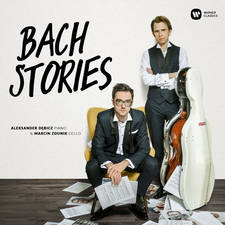Bach's Last Years: His Best Works?
Johann Sebastian Bach's final years saw him compose some of his most important works, but it also was a period in which he received his harshest criticism. Was Bach behind the times, or just misunderstood?
Before he died in 1750 at the grand old age of 65, Johann Sebastian Bach was still composing life-changing works that would be admired, loved and played hundreds of years later.
However, it's also the point in his career when he received the most criticism. Rather than celebrate the master of the Baroque style, the cultural elite were getting excited about the new classical style that was sweeping across Europe, leaving poor old Bach looking like the 18th Century equivalent of disco.
But which of these ignored late-period works went on to achieve the legendary status they now revel in?
St Matthew Passion
The St Matthew Passion from 1727 was composed when Bach's work was still relatively popular. However, shockingly, it fell into obscurity and was performed only a handful of times before a certain Felix Mendelssohn came along in 1829 and directed the first performance of the St Matthew Passion in nearly a century. Good job he did, really.
Goldberg Variations
Composed in 1741, the Goldberg Variations were (according to an early biographer) initially written by Bach to help Count Kaiserling of Saxony to sleep. The Count would call upon Goldberg, one of Bach's students, to play the variations while he attempted to get over his insomnia. Quite an inauspicious beginning, then, for one of the keyboard repertoire's best-loved works.
Mass in B minor
Bach finally finished his Mass in B minor in 1749, the year before his death. He spent years on it, gradually adding the different movements to it until it was fully formed. Surprisingly, it's estimated that a full performance of the whole work in its entirety didn't happen until 1859, over 100 years later.


























